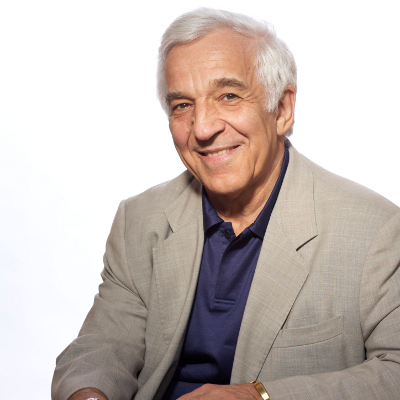At 36, the European Union Youth Orchestra still lacks musical maturity

Vladimir Ashkenazy conducted the European Union Youth Orchestra Friday night at Symphony Hall. Photo: Keith Saunders
In the case of the European Union Youth Orchestra, if youth must be served, some nights it should be served cold, or put to bed without dinner at all.
The EUYO, which the Celebrity Series brought to Symphony Hall Friday evening, part of a six-stop American tour, showed some individual moments of excellence, but generally offered a lackluster program of Copland, Liszt and Strauss.
The orchestra, founded in 1976 as a musical symbol of the newly formed European union, has a distinguished history of stellar leadership. Claudio Abbado was the founding music director, succeeded by Bernard Haitink. Since 2002, Vladimir Ashkenazy, who was on the podium for this concert, has directed.
But in this performance, the oversized ensemble lacked focus. Sorry kids. But if your patrons rent places like Symphony Hall—or Carnegie Hall, or the Kennedy Center—and engage top-tier soloists like Itzhak Perlman, Pinchas Zukerman and Yefim Bronfman, who performed this evening, then bring your A game.
Two things were clear: these young musicians can play when they want to but Friday night it was only fitfully on display. Slack bowing rhythms, exchanging jokes with desk partners, giggling at fluffed horn notes, ignoring the conductor—small things in themselves but overall it showed a lack of maturity that added up to indifferent playing and monumental distractions.
The repertory—Copland’s Outdoor Overture, Liszt’s Piano Concerto No. 2, and Strauss’ An Alpine Symphony—generally favored volume, not subtlety, and the group may be tired of it on this fourth concert of the tour. Whatever the reason, only fitful moments of individual brilliance—a horn solo, a cello duet, some of the winds—represented the group favorably.
At least there was Yefim Bronfman. The prodigious artistry of the Russian pianist has many facets, and Friday it surfaced in his vigorous attempts to create a musical dialogue in Liszt’s one-of-a-kind concerto. A single motif, established first in the winds—some real clarity in the playing here—becomes a vehicle for rest of the work.
But this is far from a theme and variations, and Bronfman’s role as a counterweight to the orchestral manipulations of key and tempo were almost heroic. In a final cadenza, making way for the final Allegretto animato, Bronfman worked his way cleverly around the original idea, but the orchestra’s tepid response seemed symbolic of this performance’s problems.
The size of the orchestra presented difficulties for Ashkenazy, who had trouble establishing a delicate sound when it was called for. The EUYO filled the stage and the conductor’s outsized gestures were clearly designed to reach the back desks.
He did not always succeed: Copland’s simplicity in An Outdoor Overture—written for a high school ensemble, but not without subtleties—got overwhelmed by volume. A note-perfect trumpet solo, which delineates the opening theme, was its sole highlight.
Similarly An Alpine Symphony had some nice playing—especially an oboe solo in the Auf dem Gipfel section—but generally was attacked like a scary mountain thunderstorm rather than a broad survey of nature’s delights. Passages with more introspective writing, like Am Wasserfall, and the buildup to the climactic storm, Stille vor dem Sturm, were raced through despite Ashkenazy’s frantic attempts to rein in the troops. When the climactic storm itself finally arrived, it hardly seemed different than most of the other movements.
There was much shouting in the hall, and onstage, after each piece, and encores were demanded and delivered. Bronfman threw off Chopin’s Étude No. 8, Op. 10 after the concerto, and the orchestra played Bernstein’s America to close the evening.
Posted in Performances




Posted Apr 23, 2012 at 11:35 am by Colin Brians
Were you at the same concert as me???? Extraordinarily patronising review and out of touch with the audience. I felt it refreshing to see such a close orchestra, both musically and emotionally. For me a concert is not purely about the sound but the entire experience. I personally took great joy in witnessing 27 nationalities playing as one. A critic I may not be, but a human being with an eye to the future of the arts I am.